Quadriceps Tendon
Introduction
The quadriceps tendon is a complex yet crucial structure to proper knee function that connects the four quadriceps muscles of the thigh to the shinbone. It transmits tremendous pull from the upper leg to the lower leg, facilitating activities like walking, running, jumping, and climbing.
More specifically, the quadriceps muscles converge into one common tendon, also sometimes called the quad tendon. This tendon is comprised of the individual tendons of the four quadriceps muscles:
- Rectus femoris
- Vastus lateralis
- Vastus medialis
- Vastus intermedius
The fused quadriceps tendon extends from the lower part of the quad muscle bellies above, straight down to the top border of the patella, also known as the kneecap. It attaches firmly to the rough bony surface on top of the patella.
As it stretches below the patellar undersurface, it becomes the patellar tendon which then extends further down from the tip of the patella to insert into a bump on the front of the tibia bone called the tibial tuberosity.
Quadriceps Muscles Anatomy
The quadriceps femoris comprises four muscles located on the front of the thigh that are crucial for extending the knee joint. The four quadriceps muscles are:
- Rectus femoris – This long, central muscle originates at the ilium bone of the hip/pelvis and runs vertically down the middle of the thigh.
- Vastus lateralis – The largest quad muscle that forms the mass on the outer thigh. It originates from the upper femur and lateral hip.
- Vastus medialis – Located more medially/inner thigh, originating at the lower femur. Helps stabilize the patella.
- Vastus intermedius – The innermost quad muscle, arising from the front of the femur between the other quad muscles.
These four quadriceps muscles converge into a single strong tendon that continues functionality from the thigh muscles to the shinbone. The rectus femoris crosses the hip joint, making this group not just knee extensors but also hip flexors.
The quadriceps muscles contract together eccentrically to control knee flexion as well as concentrically to produce powerful knee extension. Forceful contraction straightens the knee for activities like walking, running, jumping, and kicking.
Quadriceps Tendon Anatomy
The quadriceps muscles converge into the quadriceps or quad tendon approximately halfway down the thigh. This extremely strong band of fibrous connective tissue joins the lower parts of the four muscle bellies together as they come down to insert into the patella in a common single tendon.
Specifically, the quad tendon attaches to the rough triangular surface on the upper margin of the patella bone. It firmly fixes the quad muscle group to the top of the kneecap.
The tendon fibers extend below the patella as the patellar tendon which then continues from the tip/apex of the kneecap to insert onto a bump on the anterior tibia called the tibial tuberosity.
So in summary, the fused quadriceps tendon with its continuation of the patellar tendon forms a bridge between the femoral thigh bone quad muscles and the tibial shin bone to produce movement and stability for optimal function of the knee joint.
Functions of the Quadriceps Tendon
The main function of the quadriceps tendon is to transmit the large forces generated by the quadriceps muscle group to the bones of the lower leg to move the knee joint. Specifically, the quad tendon’s role is to transfer the tremendous strength and power of contractions within the rectus femoris, vastus lateralis, vastus medialis, and vastus intermedius to ultimately cause extension (straightening) of the knee.
This very thick and strong tendon starts as four individual tendons from each of the quad muscles halfway down the thigh. It then joins together as a common quad tendon inserted into the rough top border of the patella (kneecap). The quadriceps tendon fibers continue below the patella, becoming the patellar tendon fibers between the patella apex and tibial tuberosity bump.
During knee extension, the quadriceps muscles contract concentrically, pulling on the attached quad tendon. This puts the tendon under great tension, transmitting large tensile forces through the tendon fibers. The tension is transmitted across the knee joint space from the femur to the tibia bones by the patellar tendon portion.
This action causes straightening of the knee, increasing the joint angle towards zero degrees from the bent position. It generates movement needed for walking, running, jumping vertically, pedaling when cycling, kicking a ball, and rising from a squat or sitting – crucial actions we need quad control and strength for in daily living.
The tendon stretches slightly, storing some elastic energy during these activities. It acts as a shock-absorbing structure, protecting the muscle fibers and knee joint. The tendon properties including thickness, elasticity, and tensile strength are essential for optimal functioning during weight-bearing knee extension against gravity and propulsive movements off the ground.
In summary, the function of the quadriceps tendon is force and movement transmission – delivering the hard-working quad muscles’ pulling ability to the patella and tibia bones to achieve active straightening of the knee necessary for ambulation, daily tasks, and sports.
Quadriceps Injuries
Injuries to the quadriceps muscle group located on the front of the thigh are common among athletes and those performing strenuous activities involving the legs. The rectus femoris, vastus medialis, vastus lateralis, and vastus intermedius work together powerfully to produce knee extension. Overload or trauma to these muscles or their connecting tendons causes pain and impairment.
Quadriceps Strains
Causes:
- Sudden bursts of speed/change of direction
- Overload from sports, trauma
Symptoms:
- Pain, swelling, bruising
- Weakness, difficulty straightening knee
Diagnosis:
- Physical exam testing strength, flexibility, swelling
- Potential imaging like ultrasound
Treatment & Recovery:
- RICE – Rest, ice, compression, elevation
- Bracing
- Physical therapy for flexibility and strength
- Healing takes a few weeks up to months
Quadriceps Tendonitis
Causes:
- Overuse from repetitive jumping or knee-bending
- Kneecap tracking issues
Symptoms:
- Pain/tenderness at the top of the kneecap
- Stiffness, swelling, trouble fully straightening knee
Diagnosis:
- Clinical exam
- Potential imaging like MRI to assess inflammation
Treatment & Recovery:
- Rest, ice, NSAIDs to reduce swelling
- Physical therapy, bracing
- Cortisone injections in some cases
- Can resolve in a couple of weeks if treated early
Patellar Tendon Ruptures
Causes:
- Sudden trauma like a fall or blow to the knee
- Jumping sports
Symptoms:
- Sudden severe pain below the kneecap
- Rapid swelling
- Inability to walk/straighten the knee
Diagnosis:
- Physical examination
- MRI confirms rupture
Treatment & Recovery
- Surgical repair of tendon
- Extensive rehab over months
- Full recovery takes about 1 year
Quadriceps Bursitis
Causes & Risk Factors:
- Repetitive kneeling
- Overuse from running, jumping
- Knee arthritis or gout
Symptoms:
- Pain, swelling at the top/front of the kneecap
- Stiffness that may limit knee movement
Diagnosis:
- Clinical exam of swelling and tenderness
- May use ultrasound or MRI
Treatment & Recovery:
- RICE – Rest, ice, anti-inflammatories
- May inject corticosterone for pain relief
- Knee pad for activities requiring kneeling
Quadriceps Contusions
Causes & Risk Factors:
- Direct blow or trauma to the front of the thigh
- Results in bleeding into muscle
Symptoms:
- Pain, swelling, and bruising over the quad muscle group
- Weakness when trying to fully straighten the knee
Diagnosis:
- History of the mechanism of injury
- Clinical observation of contusion
Treatment & Recovery
- RICE, over-the-counter pain medication
- Slowly increase activity as tolerated
- Healing takes 1-6 weeks depending on the severity
Quadriceps Compartment Syndrome
Causes & Risk Factors:
- Very severe trauma crushes thigh blood vessels
- Causes pressure build up in quad muscle compartments
Symptoms:
- Significant pain out of proportion even at rest
- Tense muscle compartments with pain on passive stretching
Diagnosis:
- Check compartment pressure numbers
Treatment & Recovery
- Emergency surgical release of muscle coverings
- Monitoring and wound care post-surgery
- Requires extensive recovery and rehab
How to strengthen your quads
Maintaining the strength and health of your quadriceps can be achieved through strengthening them. Experts usually advise beginning slowly and working your way up. Correct form is crucial when performing quad exercises, so it is best to learn how to perform them correctly, either by working with a certified personal trainer or closely adhering to exercise instructions.
Squats
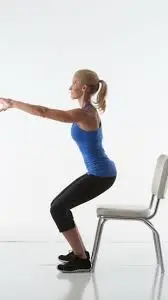
- Stand with feet wider than hip-width apart to engage more muscles.
- Push hips back and down like sitting in a chair to strengthen quads, glutes, and hamstrings and improve mobility. Keep chest up and abs engaged.
- Lower until thighs are almost parallel to the floor, burning calories and building muscle.
- Pause briefly with knees over toes to help knee stability.
- Push back up to the starting position, working the legs.
- Repeat 10-12 times to keep challenging the muscles.
Benefits: Strengthens lower body. Burns calories. Builds muscle. Improves mobility. Helps prevent injuries.
Lunges
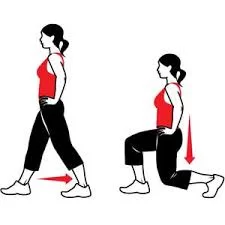
- Stand with feet hip-width apart for balance.
- Step forward with one foot, bending knees to 90 degrees to work quads, hamstrings, and calves.
- Step back to the starting position, engaging stabilizer muscles.
- Repeat 10-12 times on each leg for coordination and strength.
Benefits: Builds quads, hamstrings, and calf muscles. Challenges balance and coordination. Engages stabilizer muscles. Improves knee stability.
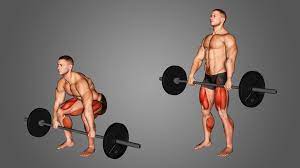
Deadlifts
- Stand with weights on the floor near feet, shoulder-width apart, to work the whole posterior chain.
- Bend knees and hips back while keeping back straight to build core strength.
- Grip weights and stand up straight, improving posture.
- Lower back down until weights touch the floor, strengthening quads, glutes, and back.
- Repeat 6-10 times for functional, daily movement.
Benefits: Develops quads, glutes, and back. Builds core and improves posture. Reinforces functional movement patterns.
Prevention
Properly Warm Up
- Stand in 5-10 minutes before intense activity to warm up your quadriceps muscles and tendon.
- Start with light cardio to increase overall body temperature and blood flow to the thighs and knees.
- Next, focus on quad stretches like standing knee hugs and prone quad stretches.
- Follow stretches with quad-strengthening preps like squats or leg extensions.
- Ease into jumping, cutting, or bursting activities after your warm-up. Cool down gradually too.
Strengthen Your Quads
- Strong quad muscles better support the attached quadriceps tendon.
- Aim for 2-3 sessions per week focused on comprehensively strengthening all four quad components.
- Include both open kinetic chain (leg extensions) and closed kinetic chain (squats) movements.
- Ensure quad exercises are executed with proper form and full range of motion.
- Build progressive overload carefully monitoring pain signals.
Also, Strengthen Your Glutes and Hamstrings
- Quad dominance and muscle imbalance strain the quad tendon attachment.
- Dedicate effort to strengthening posterior chain muscles like glutes and hamstrings to balance quad dominance.
- Yoga, pilates, and resistance training can target glutes and hamstrings.
Improve Flexibility
- Tight quad muscles contribute to overuse tendon issues.
- Actively stretch quads, hip flexors, and calves.
- Use foam rolling and massage sticks to address muscle and myofascial restrictions.
Allow Adequate Rest
- Adhere to hard-easy workout schedules, avoiding overtraining.
- Take regular rest days with reduced activity levels for tissue recovery.
- Periodize aggressive training with easier weeks every 4-6 weeks.
By warming up effectively, improving quad strength (and posterior chain too), increasing flexibility, and allowing proper rest periods, you can help prevent problematic overuse tendinopathy issues from emerging over time.
Summary
The quadriceps tendon connects the four quadriceps muscles of the thigh to the shinbone and extends from the lower part of the quad muscle bellies above, straight down to the top border of the patella, where it attaches firmly into the rough bony surface of the patella. The quadriceps muscles are four muscles located on the front of the thigh that extend the knee joint.
The quadriceps muscles are responsible for knee flexion and extension and converge into a single strong tendon that continues functionality from the thigh muscles to the shinbone. The quadriceps tendon joins the lower parts of the four muscle bellies together and inserts onto the patella in a common single tendon. It then continues below the patella as the patellar tendon and inserts onto the tibial tuberosity.
The quadriceps tendon connects the rectus femoris, vastus lateralis, vastus medialis, and vastus intermedius muscles to the patella, and transfers the force generated by the quadriceps muscles to the bones of the lower leg. The quadriceps muscles contract concentrically, pulling on the attached quad tendon. This puts the tendon under great tension, transmitting large tensile forces through the tendon fibers, and straightens the knee, generating movement needed for walking, running, jumping vertically, pedaling when cycling, and kicking a ball.
Quadriceps injuries are common among athletes and those performing strenuous activities involving the legs. Start with light cardio, then focus on quad stretches and strengthening preps, and ease into jumping, cutting, or bursting activities after your warm-up. Strengthening your quads is important to support the attached quadriceps tendon. Include both open kinetic chain (leg extensions) and closed kinetic chain (squats) movements. Adequate rest, hard-easy workout schedules, regular rest days, and periodized aggressive training can help prevent problematic overuse tendinopathy issues from emerging over time.
FAQs
Can I still walk if I tear my quad tendon?
Most people cannot walk normally if they suffer a full-thickness tear of their quad tendon. Severe pain, swelling, and difficulty straightening the knee make bearing weight through the affected leg challenging to impossible. Partial tears may still allow some ambulation.
How long does it take to return to sports after a quad tendon repair?
It typically takes about 12 months to return to pivoting sports after surgery to reattach a torn quadriceps tendon. The rehabilitation timeline progresses very gradually from brace use and restricted motion to physical therapy focused on regaining knee stability, strength, and mobility.
Do quad tears require surgery?
Partial quadriceps tendon tears may heal without surgery using conservative treatment like immobilization bracing and physical therapy. But complete ruptures with separation of the tendon fibers necessitate surgical intervention to suture the tendon ends back together again.
Can your quad tendon heal on its own?
An isolated mild quadriceps muscle strain may heal independently with rest, ice, and time off. However, a torn quadriceps or patellar tendon itself that has fibrous disruption does require surgical repair for proper healing of the tendon.
How painful is a torn quad tendon?
Quadriceps tendon tears cause sudden, sharp, excruciating pain above the patella with knee extension attempts, often described as severely debilitating. Even after immobilization, pain remains significant for a while during the post-surgical healing process.
How effective is PRP treatment for quad tendinopathy?
Research indicates that PRP injections to deliver concentrated growth factors show promising results for stubborn cases of painful quadriceps tendinopathy. Many report significantly less pain and improved function after PRP injection treatment sessions.
References
- Professional, C. C. M. (n.d.). Quadriceps Tendon Tear. Cleveland Clinic. https://my.clevelandclinic.org/health/diseases/quadriceps-tendon-tear
- What to Know About Your Quadriceps Muscles. (2020, June 16). Healthline. https://www.healthline.com/health/quadriceps#anatomy
- Quadriceps Muscle. (n.d.). Physiopedia. https://www.physio-pedia.com/Quadriceps_Muscle

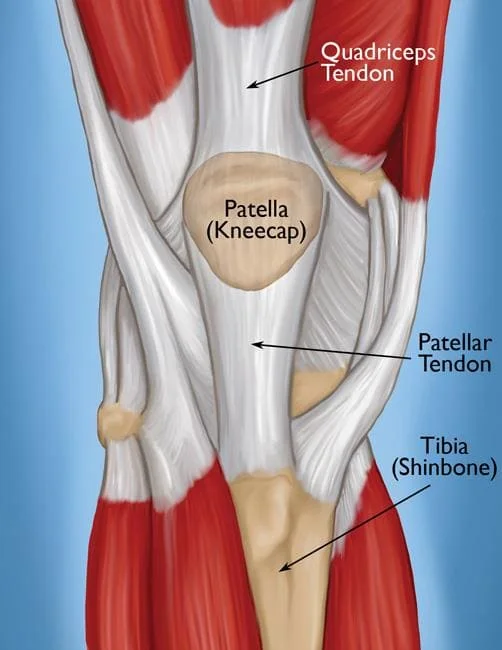
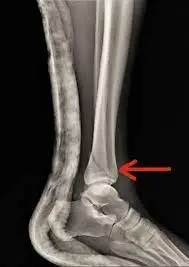
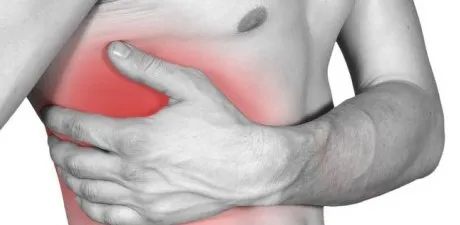
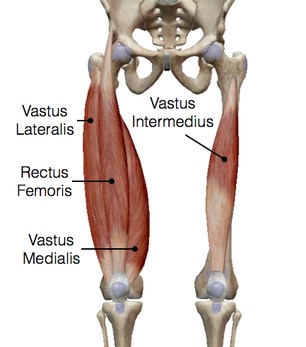
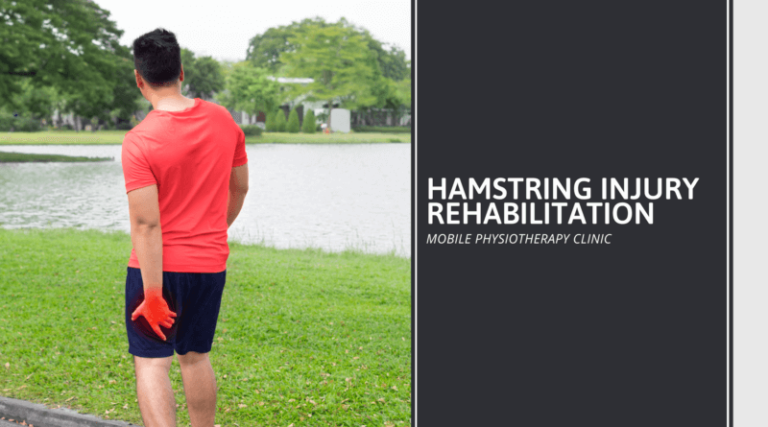
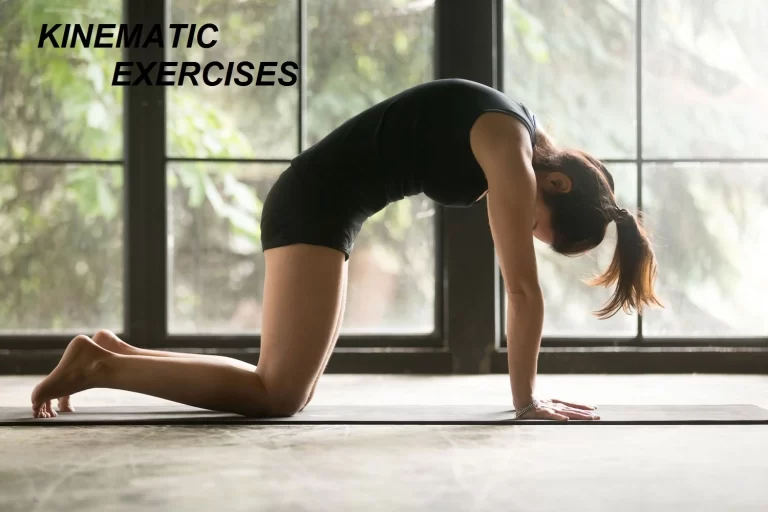
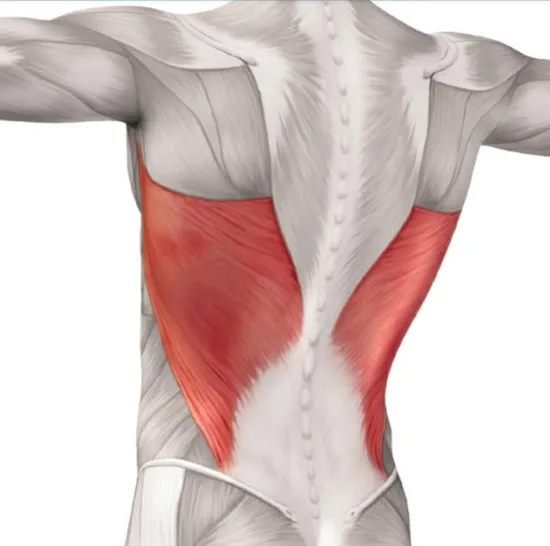
One Comment